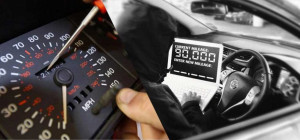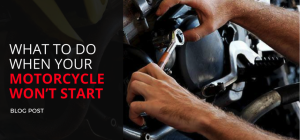 Cars with automatic transmission are a great attraction for new drivers because they take away the hassle of gear changing and clutch handling. Those used to driving manual transmission vehicles do need to learn some basic differences between manual and automatic so they don’t run into trouble.
Cars with automatic transmission are a great attraction for new drivers because they take away the hassle of gear changing and clutch handling. Those used to driving manual transmission vehicles do need to learn some basic differences between manual and automatic so they don’t run into trouble.
Why Auto transmission is so popular
Automatic cars are all the rage now the world over. Since they are so much easier to drive, new drivers prefer auto cars over manual transmission ones. New drivers find it quite difficult to learn clutch controls and gear changes in a manual car. With car’s transmission changing gears on the fly, the driver can focus all his attention on driving without getting distracted by when to release the clutch and when to shift gear. All you need to learn are driving rules and steering control and you are on your way to becoming a driver. It is, therefore, no surprise that auto transmission vehicles are so popular these days. In many African countries manual transmission vehicles still sell well but in the Americas and Europe fight has already been won by automatic transmission vehicles.
Tips for Driving an Automatic Transmission Car
The story is different when a driver experienced in manual transmission car starts driving an automatic car. Here are some tips to help you transition. First, there are only two-foot pedals in an automatic transmission car – the brake pedal and gas pedal (also called accelerator), the clutch pedal that gave you so much trouble in a manual is gone. Clutch is no longer needed because gears are being changed by the car and not by you manually.
Second, while you use both your feet when driving a manual transmission vehicle, you have to unlearn this when driving an auto vehicle. In an auto vehicle, both pedals are to be operated by driver’s right foot and left foot can relax. Sometimes when have just switched from manual to automatic, the left foot can land on brake pedal when changing gears, this can be a problem so one way to train the left foot is to take the shoe off so you feel the difference in the two feet, the other trick is to tuck left foot under your right feet to keep it out of the way.
Third, you don’t have to learn the motions of putting a car into different gears. You just pull the lever to the desired setting and the car goes in that gear. All auto cars have these four settings: P for Park, R for Reverse, N for Neutral and D for driving. Other cars and vans may have more fixed gears for easier maneuverability when going downhill or when driving in snow. Neutral N is used if the car has to be pushed or towed.
Before starting the car, make sure the gear is in Park (P) mode, now turn on the engine and press the brake pedal down with your right foot. Change the gear lever from park option (P) to drive (D) option. You are ready to drive now. Hold the handbrake and look all around, including the blind spots, to make sure it is safe to move. Release the handbrake once you know it is safe. Slowly, lift your foot off the brake, making the car move forward. Put your right foot on the accelerator and press down to increase speed.
Cruise Control
Most auto cars now come with cruise control in and around the steering wheel. Once cruise control button is pressed, the car will maintain the precise speed you were traveling at when you pressed this button.
Things to be aware of when driving an automatic
There are a number of quirks that you need to be aware of when driving an automatic vehicle, especially if you are not used to the set up:
- Engine ‘creep’: Most auto vehicles creep forward when the engine is started, so it is a good habit to have your foot on the brake at this time. A good thing is that many automatic cars will not even start if you don’t have your foot on the brake.
- High gears on hills:An automatic car will change up to a higher gear on a steep downhill stretch as your speed increases. Shift to a lower gear setting until you have passed the hill and then move back to Drive mode to put the auto transmission back in charge
- Reduced engine braking:An automatic car does not offer the same engine braking as a manual car when you take the foot off the accelerator so you will find yourself braking more heavily that you would do in a manual car.
- Changing up at corners:Auto transmission cars can change up a gear when you ease the pressure on the gas pedal for a corner. Avoid this by gradually slowing down thus causing your engine to change down a gear, then accelerating through the bend.
- Slippery conditions:In conditions such as snow and ice, it is safer to use a higher gear by manually selecting a higher gear (2 or 3 on the gear stick).
- Left foot braking:It is tempting to use left foot for braking, but avoid doing this to reduce confusion in an emergency stop. Occasionally, you may need to use your left foot to brake when maneuvering on a hill as you will need a little acceleration to move the car but as a general rule use only your right foot.
Contributed byhttp://toyota-dealer.org







